The perimeter of a regular polygon = number of sides × length of one side
The perimeter of a square = 4 × side
Perimeter of rectangle = 2 × (l + b)
(where l and b denote the length and breadth respectively of the rectangle)
Area of a square = side × side
Area of a rectangle = l × b
Triangles as Parts of Rectangles
The sum of the areas of the two triangles, into which a diagonal of a rectangle divides the rectangle, is the same as the area of the rectangle. Also, both the triangles are equal in area.
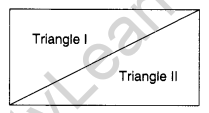
Generalising for Other Congruent Parts of Rectangles
If we divide a rectangle into two congruent parts so that the area of one part is equal to the area of the other part, then
area of each congruent part = \(\frac { 1 }{ 2 }\) (the area of the rectangle)
Area of parallelogram = base × corresponding height (altitude)
Conversion of Units
1cm =10 mm
1 cm2 = 100 mm2
1 m2 = 100 × 100 = 10,000 cm2
1 km2 = 1000 × 1000 = 1,000,000 m2
1 hectare = 10,000 m2
Perimeter of square = 4 × side
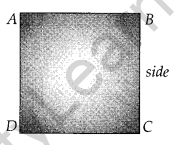
Perimeter of Rectangle = 2 × (length + breadth)
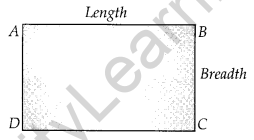
Perimeter of triangle = sum of all sides of triangle = a + b + c
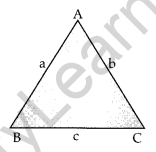
Area of square = side × side = (side)2
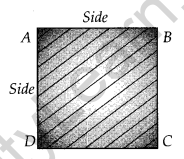
Area of Rectangle = Length × Breadth = l × b
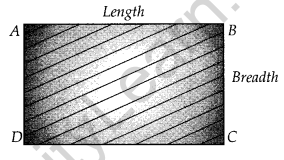
Area of Triangle = \(\frac { 1 }{ 2 }\) × Base × Height (Altitude)
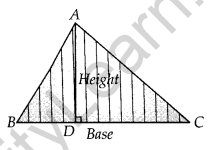
Area of a parallelogram = Base × Height
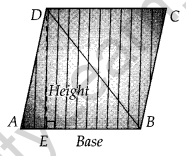
The distance around a circular region is known as its circumference.
Circumference of a circle = πd = π(2r) = 2πr. where d is diameter and r is the radius.
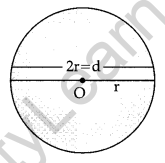
Area of a circle = πr2
π = \(\frac { 22 }{ 7 }\) or 3.14 (approximately).


